#micropterus salmoides
Explore tagged Tumblr posts
Text
drum (aplodinotus grunniens) and largemouth bass (micropterus salmoides)

31K notes
·
View notes
Text
Wet Beast Wednesday: largemouth bass
It's bass season, y'all, and this week's Wet Beast Wednesday will teach you all about the angler's favorite fish. These predatory sunfish have become one of the most popular fish for catching due to the fight they put up. Unfortunately, this popularity had led to them being introduced out of their range and becoming an invasive species in many places.

(Image: a largemouth bass from the side. It is a medium-sized fish with a long and thick body that is various shades of green. The mouth is very large and extends behind the eyes. The lower jaw protrudes beyond the upper jaw. There is a jagged black stripe going down the side. End ID)
The largemouth bass is scientifically named Micropterus nigricans, but many sources call it Micropterus salmoides. For a long time, largemouth bass and the Florida bass were classified as the same species under Micropterus salmoides. In 2022, genetic testing concluded that they were separate species. The Florida bass kept the old name while the largemouth bass was renamed to Micropterus nigricans. Largemouth bass are members of the sunfish family Centrarchidae, but not all bass are. Bass is a non-taxonomic term that refers to a bunch of distantly related fish. The Centrarchid basses are called black basses and the largemouth is the largest of them, with an average length of 30.5 to 65.5 (12 to 24 in) long and weight of 5.4 kg (12 lbs). The largest individual on record was 75 cm (29.5 in) and estimated to weigh 11.5 kg (25 lbs). They are longer and thicker than the stereotypical sunfish (such as a bluegill) with a large mouth. Like many fish, the mouth is extendable and can get even larger when fully extended. The largemouth bass can be distinguished from the closely-related smallmouth bass by the mouth. In largemouth bass, the back of the mouth extends behind the eye, while in smallmouth bass it does not.

(Image: a largemouth bass with its mouth held open by someone's thumb. The bones of the mouth extend outward and stretch out the skin to form a tubular shape through which the gills are visible. End ID)
Largemouth bass are native to freshwater habitats of eastern and central North America from southern Canada to northern Mexico. They prefer lakes with plenty of vegetation, but can also be found in rivers. They are voracious predators who will eat just about anything they can fit in their mouths, though smaller fish and crayfish make up the bulk of their diet. They have been known to try to eat food over half their body length in size. Their large and extendable mouths allow for very efficient suction feeding. By quickly opening their mouths, the fish create a vacuum that sucks water and prey in. The mouth open upward, making the bass more efficient at hunting prey that is above them. The best defense against a largemouth bass is hiding in shelter like plants. Bass living in very weedy lakes have been observed to grow slower due to having more trouble finding food. In the reverse of that, largemouth bass living in ponds with little to know cover have been known to deplete small fish populations and cause ecological collapse. Largemouth bass primarily hunt by sight and perform poorly in murky water. While young largemouth bass are prey to a number of species, adults are typically apex predators, though they are vulnerable to predation by bald eagles. They are territorial and typically maintain a small area they use as hunting grounds.
(Video: a largemouth bass biting a lure, played in normal speed and then in slow motion. This shows how the fish opens its mouth to create suction and pull the lure in. The whole thing takes less than a second. End ID)
Largemouth bass mate in spring, with water temperature and day length seeming to be the main triggering factors. Males will make circular nests by fanning away debris to create a depression. They typically do not make nests within 3.6 m (12 ft) of each other. Nests are made in shallow water, usually no more than 1.2 m (4 ft) deep and they prefer sand and gravel to mud and rock and will prioritize areas with come sore of cover. Males will attract females by swimming around the nest. If a female is interested, they will swim around the nest together. They place themselves belly to belly over the nest and release sperm and eggs at the same time from their cloacae (their bassholes, if you will). The female then leaves and the male will remain to guard the eggs, typically patrolling a perimeter of 1.8 m (6 ft) around it, but coming closer in water with worse visibility. Females can lay up to 7,000 eggs per pound of body mass, with clutches of 80,000 eggs being reported. Predation is a major source of egg loss, with sunfish in particular enjoying them. Eggs hatch in 2-10 days (longer in cold water) and remain in the nest as fry. They rely on yolk for the first few days to a week before switching to a diet of zooplankton. Fry will remain in the nest for up to a couple weeks before dispersing. At this point, the male will abandon the nest. The majority of fry will not reach adulthood. Most bass will reach sexual maturity at age 1. They can live for quite a while, with an average lifespan of 10 to 15 years. The oldest one on record reached 23.

Image: a juvenile largemouth bass held in someone's hand. It is a smaller and slightly skinnier version of an adult. End ID)
Largemouth bass are classified as least concern by the IUCN, meaning they are not in danger of extinction. They are notable for being very popular amongst anglers due to putting up a good fight and being edible. This has led to a common practice of raising bass in captivity and releasing them into lakes as juveniles or adults to keep the lakes stocked. They have also been introduced to lakes outside of their native range to provide for anglers. Because of this, largemouth bass have become an invasive species throughout large parts of the world including southern Europe, southern Africa, China, South America, and various islands. Largemouth bass can now be found on every continent except mainland Australia and Antarctica. Their voracious and diverse eating habits let them out eat and out compete native fish species. Control measures include banning the introduction of bass and encouraging removal, but high demand from anglers and the fish's skill at survival means getting rid of them is an uphill battle.

(Image: a woman holding an exceptionally large largemouth bass with one hand at the tail and one in the mouth. End ID)
#wet beast wednesday#largemouth bass#bass#sunfish#fish#freshwater fish#fishblr#fishpost#fishposting#freshwater ecology#biology#ecology#zoology#animal facts#informative#educational#image described
13 notes
·
View notes
Text

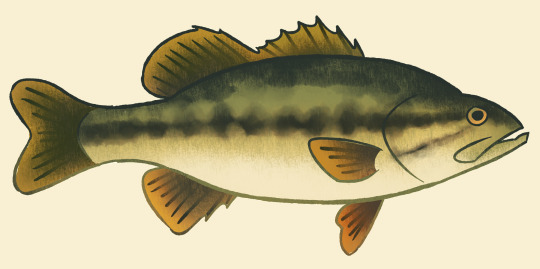
54 common fish of texas, part 22: Rio Grande cichlid (Herichthys cyanoguttatus), largemouth bass (Micropterus salmoides)
#THIS CONCLUDES THE SERIES!!!!!!!!!!!!!!!!! now all that's left is to pass that damn taxonomy exam!!!!#54 fish#art#fish#orig#cichlid#rio grande cichlid#bass#largemouth bass
58 notes
·
View notes
Text

Micropterus salmoides - Largemouth bass - Perca americana
Location: North America
24 notes
·
View notes
Text
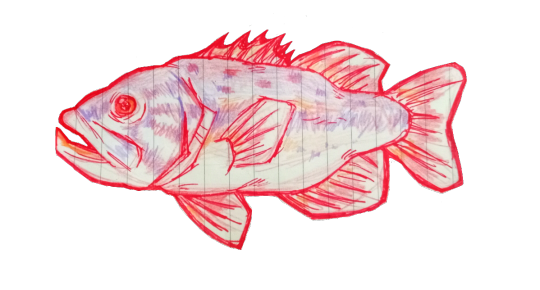
Large-mouth bass (Micropterus salmoides)
5 notes
·
View notes
Text
The various types of vision found in fish species that has forced me to rethink the use of light and colour in my book:
Visible light is split up into various wavelengths, with ultra violet on one end of the spectrum and red on the other. Ultraviolet is the shortest wavelength and red is the longest. Water absorbs red more easily than blue, so at a depth of 1 metre, 25% of red light entering the water is already absorbed, and at 10 metre 85% of blue is absorbed.
To put that into perspective, if a fish is looking up at a red and blue object from 1 metre underwater, the red object appears grey. At 100 metres all colour is absorbed and fish can only see in black and white.
Types of Colour Vision
Tetrachromatic Vision: Fish that can see all four colours - Red, blue, green, and ultraviolet
Goldfish
Rainbow Trout
Zebrafish
Trichromatic Vision: Fish that can see three colours - Red, blue, green
Cichlids
Dichromatic Vision: Fish that are sensitive to red and see in blue-green
Catfish
Largemouth bass
Micropterus salmoides
Monochromatic vision: Fish that are colour blind
Sharks
Rays
Whales
Bonus Trivia
The lens of fish eyes is spherical, unlike human eyes. The lens is fixed in its shape, meaning it cannot be adjusted to facilitate focusing on nearer or more distant objects, instead, the lens moves forward and backwards.
Fish can see underwater AND on land, in contrast to humans who become near-sighted underwater.
Fish are better at seeing in low-light
Fish can see in the dark
Many deep-sea creatures have developed advanced vision where instead of distinguishing colours, they can see wavelengths, such as octopus.
Despite most fish seeing more colours than humans, vision is still their weakest sense. They are more sensitive to smell, sound and vibrations.
Many fish have speckling around the iris. This is due to how the iris consists of three layers, with the outermost layer made of guanine crystals. This reflects 90% of incoming blue-green light downwards rather than upwards and back towards the sun, so they're not visible to predators.
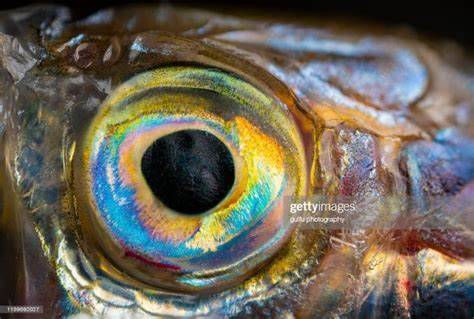
#me rapidly redesigning the cast so they have beautiful crystal eyes#I now need to rethink the use of colours in the red spectrum in certain scenes because they are the first to become muted#which means the colourblind Brilynn can't see her obnoxiously orange GF#who is constantly giving off 'don't fuck with me I'm venomous' vibes
3 notes
·
View notes
Text
[CM] Fish
This is our last lexicon post! For now, at least. Guess it’s time for me to get some different things ready for posting... until then, I bring fish. Below are translations for ten different species. It can be assumed that all these species are hunted unless it’s noted otherwise.
White sucker (Catostomus commersonii) - Mlowo (mlub*, owo*) Long pale fish with a distinct circular suckermouth. Most often found on the bottom of water bodies.
Golden shiner (Notemigonus crysoleucas) - Shish Silver-yellow fish. Found in quiet, weedy waters.
Creek chub (Semotilus atromaculatus) - Shulp Medium-sized minnow found in small streams and rivers.
Banded killifish (Fundulus diaphanus) - Seebip (eeb*, sip*) Small striped fish found schooling in shallow water.
Mummichog (Fundulus heteroclitus) - Haish (hai*) Little fish with many thin stripes, named for its dense schooling habits.
Chain pickerel (Esox niger) - Kishki Long, distinctly-shaped pike with chain-like stripes and sharp teeth. Our protagonist, Pickerelstripe/Kishkiseek, is named after chain pickerels!
Pumpkinseed (Lepomis gibbosus) - Paliub (paliu*, mlub*) Colorful and often found in groups. Also known as punkies, which is a prefix I now want to use...
Largemouth bass (Micropterus salmoides) - Glubub Distinct green fish that can grow very large, possibly being the biggest on ClayClan territory! They provide a challenging but rewarding hunt experience.
Yellow perch (Perca flavescens) - Shik Large perch that comes in shades of yellow, green, and black. Named for its spiky fins that deter most hunters.
Brown trout (Salmo trutta) - Ushoob Heavily spotted trout found in cold water. Challenging to hunt.
5 notes
·
View notes
Text
Micropterus salmoides
Largemouth Bass Diorama

Wooden plaque for the base. Scenery made with two chunks of branch coated in modge podge, insulation foam covered in plaster/paint/modge podge, sand, and some fake lichen from my local hobby store. Fish is made from air dry clay, armature wire, and aluminum foil. Fish was airbrushed, scenery was hand painted. Every was sealed in a satin finish, the eyes were brushed with gloss modge podge. The fish is mounted to the display with two brass rods so I can replace the fish when I improve my skills with clay.









#art#painting#crafts#diorama#fishing#fish#fishblr#largemouth bass#display#my art#terrain#freshwater fish#clay#clay animal#clay art
2 notes
·
View notes
Text
Gender affirming Micropterus salmoides pro shop hat

18K notes
·
View notes
Text
Chemical Exposure, Public Health Concerns, & Environmental Impact Chemical Health Effects A.) Mercury Health Risks Neurological damage (adolescent) Neurological damage and developmental disabilities (in utero, neonatal stage) Low I.Q B.) Asbestos Health Risks lung cancer breathing difficulty death C.) Lead Health Risks Mental Retardation Stunted Growth Visual/Hearing Impairment D.) Radon Health Risks Lung Cancer Mercury Mercury has long been identified as an environmental hazard and of great concern to public health. Mercury is toxic to vital organs and is deadly when entered into the bloodstream in quantities greater than trace amounts. Recently, mercury has been observed in oceanic fish that are caught in the wild and sold at markets and in fish caught at reservoirs. "Mercury has been found in largemouth bass (Micropterus salmoides) from five South Carolina reservoirs. According to investigators, "mercury concentrations in largemouth bass (Micropterus salmoides) bass were compared among five reservoirs in South Carolina. Three of these reservoirs (Lake Russell, Lake Thurmond, and Lake Marion) are accessible to the public and two (L-Lake and Par Pond) are located on the U.S. Department of Energy's Savanna River Site (SRS), which is closed to public access." (NewsRx, 2006) The implication is the U.S. DoE has potentially released excess mercury, which has drained into these lakes and reservoirs. Most industrial sites are major environmental hazards as the release chemicals into the environment. The DoE is similar to private industrial operations such that chemicals are also released into the environment that causes considerable damage to the eco system and creates major health hazards for the population at-large. However, "no mercury concentrations in excess of the U.S. Food and Drug Administration action level (1.0mg/kg) were found in any bass from the public-accessible reservoirs. However, the majority of fish from these reservoirs had mercury concentrations that fall into or exceed the U.S. Environmental Protection Agency consumption category of 'no more than one per week'. (NewsRx) "Researchers from the Mount Sinai School of Medicine estimated (in 2000) the annual cost of lost productivity associated with IQ impairment from mercury pollution was U.S. 1.3 billion. Health and medical groups cited widely accepted scientific research describing mercury as a 'potent neurotoxicant' that can cause developmental and learning difficulties, reduce IQ, and impair motor function, vision and hearing." (ANJ, 2005) Asbestos Asbestos has been in the news as a public health threat for over a half century. The issue with asbestos is not in the material itself, but in the release of fibers from asbestos into the air and into human lungs. Implications are greatest with regard to asbestos contamination within the school setting and with construction/mining workers. "Corn is convinced that the question of risk-whether there is more risk in removing asbestos materials or leaving them in place-should have been seen as a scientifically settled issue. The EPA exaggerated risks and avoided uncertainties, while Congress did not take time to understand the science and passed a law that encouraged schools to proceed with high-risk asbestos abatement. Yet if the point is a high degree of confusion and controversy, Corn's apparent disappointment in a confused policy outcome seems inconsistent." (Kovarik, 2007) "Asbestos is an occupational and environmental hazard of catastrophic proportions. Asbestos has been responsible for over 200,000 deaths in the United States, and it will cause millions more deaths worldwide. The profound tragedy of the asbestos epidemic is that all illnesses and deaths related to asbestos are entirely preventable." (LaDou, Landrigan, Bailar, Foa, 2001) "The toll of illness and death among asbestos workers in mining, construction, and heavy industry is well-known." (LaDou, Landrigan, Bailar, Foa, 2001) Lead Lead is another well-known threat and is of greatest danger to children and to those within industrial environments where lead is known or is commonly used. "Lead poses a serious environmental health risk to young children, causing such irreversible health effects as mental retardation, stunted growth, and hearing and visual impairment. Studies suggest that various sectors of the public, including children's caregivers, are not sufficiently concerned about this risk or knowledgeable about ways of minimizing it." (Brittle, Zint, 2003) The developmental stage of a child's growth is extremely sensitive and is subject to abnormal physiological and psychological development should any child ingest or have lead ions enter into the blood stream. Caregivers and other members of society whom have direct contact with children must be made aware of this fact. There has been a new wave of immigrants, many whom may have emigrated from nations where lead is ubiquitous in the environment. "Children may encounter lead almost anywhere, from their homes to their playgrounds. Lead paint continues to cause most cases of severe lead poisoning in children, although its use was outlawed in 1978 (Needleman, 1998). As older homes deteriorate or are renovated, lead paint may flake, creating a hazard of ingestion by children and dust contamination that is often invisible to the unaided human eye." (Brittle, Zint, 2003) "In the United States, about 7.6% of children under six years of age are estimated to have blood lead levels above those that federal agencies consider safe (the blood lead standard is currently 10 micrograms per deciliter g/dl]) (Centers for Disease Control and prevention , 2000). These children disproportionately live in poor, urban areas, and consequently, in some parts of the country, up to 30% of children may be exposed to unsafe levels of lead (CDC, 2000)." (Brittle, Zint, 2003) Radon Radon levels have been an issue in many a rural town throughout the country. Unfortunately, the overall awareness of radon and the inherent danger of high radon levels is not fully understood by residents. "People are advised to take action when the radon gas levels in their home are above the average health-risk range, said Dr. Christine Nevin-Woods." (Sword 2008) "Radon can cause lung cancer in people who are exposed to the invisible, odorless gas above certain levels and for prolonged periods of time. It seeps from the ground into homes through cracks in foundations and basement walls. Higher levels typically are found in basements than upper levels. Radon is produced as part of the natural decay process of uranium, and highly mineralized areas, have a bounty of metals, including uranium, says Nevin-Woods. Radon kits are available at most hardware stores for less than $20. The tests are conducted by opening the test kit container and leaving them on a table in the lowest livable area of the home for a minimum of 48 hours." (Sword, 2008) Radon is unfortunately not a threat that is made widely aware. Many are unaware of the natural decaying of uranium in uranium rich environments. "It is important to test for an to determine the radon levels in homes as long-term radon exposure is the most frequent cause of lung cancer in non-smokers, and the second major cause of lung cancer in smokers, says Nevin-Woods)." (Sword, 2008) References Brittle, C., & Zint, M. (2003). Do newspapers lead with lead? A content analysis of how lead health risks to children are covered National Environmental Health Association. Retrieved from http://search.proquest.com/docview/219711518?accountid=13044 Environmental health; mercury is found in largemouth bass from five south carolina reservoirs (2006). NewsRx. Retrieved from http://search.proquest.com/docview/211440363?accountid=13044 Kovarik, W. (2007). Environmental public health policy for asbestos on schools: Unintended consequences Oxford University Press, UK. Retrieved from http://search.proquest.com/docview/216116437?accountid=13044 LaDou, J., Landrigan, P., Bailar, J., Foa, V., & al, e. (2001). A call for an international ban on asbestos: CMAJ Canadian Medical Association. Retrieved from http://search.proquest.com/docview/204818505?accountid=13044 USA nurses sue the EPA over mercury: ANJ (2005). Australian Nurses Federation. Retrieved from http://search.proquest.com/docview/236565471?accountid=13044 Read the full article
0 notes
Link
1 note
·
View note
Text
TEXAS FISH
TEXAS FISH
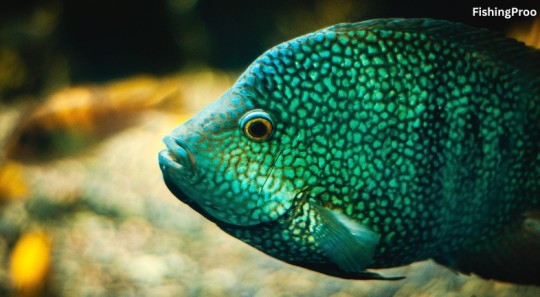
Texas, with its diverse landscapes and abundant water resources, offers a haven for anglers seeking a rich and varied fishing experience. From the Gulf Coast to the freshwater lakes and rivers, the Lone Star State boasts an array of fish species, making it a premier destination for fishing enthusiasts.
One of the most sought-after fish in Texas is the iconic largemouth bass (Micropterus salmoides). Known for its aggressive strikes and powerful fights, the largemouth bass is abundant in the state's numerous lakes and reservoirs. Anglers flock to renowned bass fishing destinations like Lake Fork, Sam Rayburn Reservoir, and Falcon Lake, where trophy-sized bass are frequently caught. The thrill of landing a double-digit bass in the Lone Star State is a draw that keeps anglers returning year after year.
The Texas Gulf Coast offers a saltwater fishing paradise, with species like redfish, speckled trout, and flounder enticing anglers to its shores. The expansive coastal marshes, bays, and estuaries provide fertile grounds for inshore fishing adventures. The shallow flats and intricate bay systems make it a prime location for anglers pursuing the "Texas Slam," a coveted catch that includes redfish, speckled trout, and flounder all in one day.
Redfish, also known as red drum, are a staple of Texas saltwater fishing. These powerful and beautiful fish are known for their distinctive copper-colored tails and their willingness to strike a variety of lures. The Texas coast offers ample opportunities for both sight casting to tailing redfish in the shallows and targeting them around oyster reefs and grassy flats.
Speckled trout, or "specks," are another prized catch along the Texas coast. These silvery, spotted fish are known for their tasty white flesh. Anglers often target them using a variety of artificial lures or live bait in the grassy shallows or near structure like rocks and jetties.
Flounder, with their unique appearance and delicious taste, round out the Texas Slam. Anglers frequently target flounder by casting artificial lures or presenting live bait along the sandy bottoms and channels. The thrill of feeling that distinct thump on the line when a flounder strikes is a memorable experience for those fishing the Texas Gulf Coast.
In addition to the popular game fish, Texas waters host a variety of other species that offer diverse fishing opportunities. Catfish, crappie, sunfish, and striped bass thrive in the state's numerous rivers and lakes. Whether fishing from the banks, a boat, or a kayak, anglers in Texas can find suitable waters to pursue their preferred species.
Texas also has a strong tradition of freshwater fly fishing. The Guadalupe River, in particular, is renowned for its rainbow and brown trout fisheries. Anglers flock to its cool, clear waters for a chance to catch trout against the picturesque Hill Country backdrop.
The Texas Parks and Wildlife Department (TPWD) actively manages and conserves the state's fisheries. They implement various programs to ensure sustainable and thriving fish populations, promoting catch-and-release practices and monitoring regulations to maintain healthy ecosystems.
1 note
·
View note
Photo

Largemouth Bass Micropterus salmoides Centrarchidae (Freshwater Sunfishes)
Photograph taken on August 7, 2021, at Parry Sound District, Ontario.
#wildflowers of southern ontario#Largemouth Bass#bass#fish#Micropterus salmoides#Centrarchidae#Micropterus#freshwater fish#parry sound#ontario#canada
12 notes
·
View notes
Text
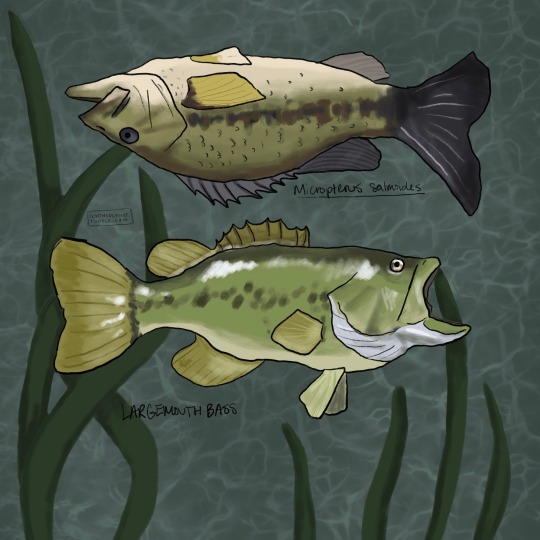
Largemouth Bass (Micropterus salmoides)
0 notes
Photo
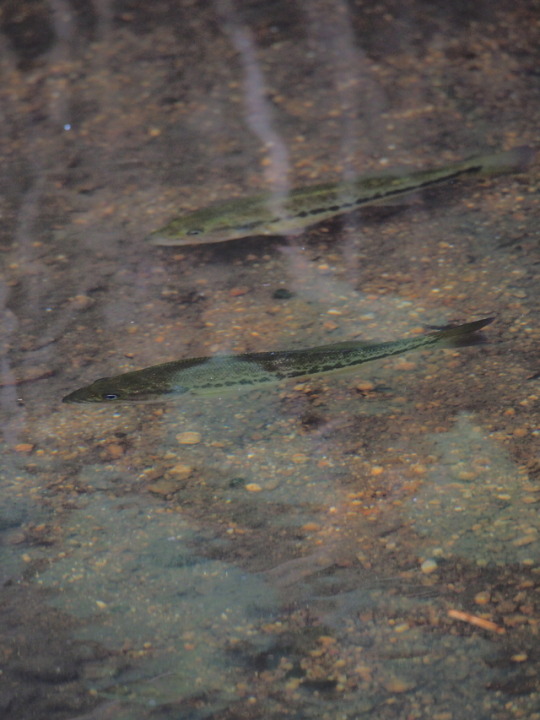
Black bass
41 notes
·
View notes
Photo

this is the bass of the year y'all it doesn't look like it because I have big hands but it's like a foot and a half.
#largemouth bass#Micropterus salmoides#bass#nanfa#nanf#freshwater fish#freshwater fishing#fish#fishing
5 notes
·
View notes